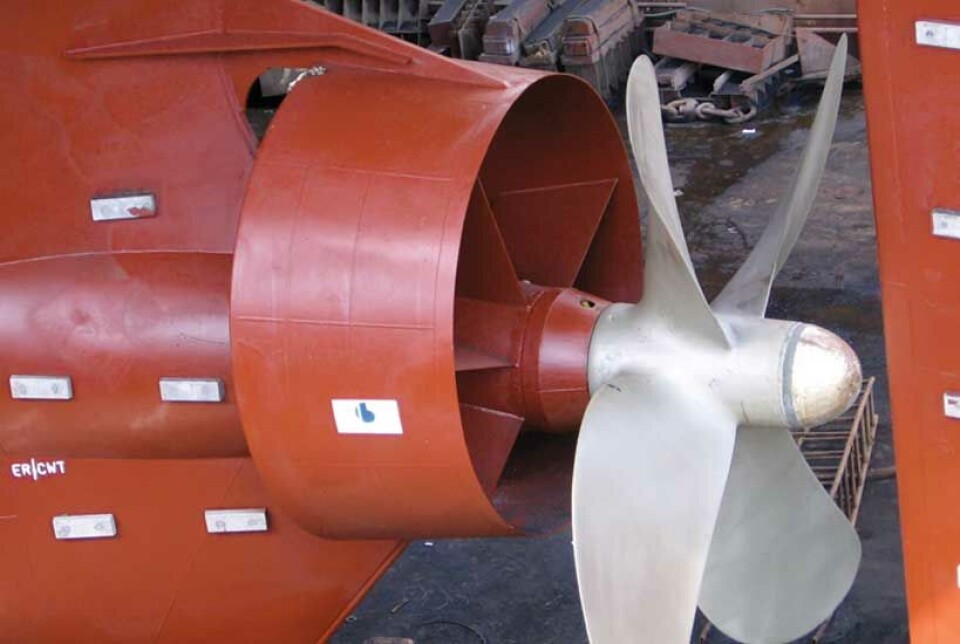
The green solution below the waterline
Shipowners worldwide are looking for solutions to two major challenges today: to reduce costs and the impact on the environment. Becker Marine Systems’ breakthrough innovation, the Mewis Duct is just this kind of solution and represents a major step towards the creation of a green ship.
Denne artikkelen er tre år eller eldre.
The Becker Mewis Duct is a smart and economic way to considerably reduce CO2 and NOx emissions from our customers’ fleets. The concept is just what you would expect from Becker: simple and efficient. The Becker Mewis Duct is placed in front of the propeller with the purpose of improving flow to it. The device combines a pre-swirl stator and a duct. The non-movable stator blades create a pre-swirl, giving the propeller a more favorable angle of attack. The duct increases flow velocity towards the propeller and creates a forward-directed force with its wing section shape. These features add up to possible energy savings of up to 8 percent for full-form, slower ships such as tankers and bulkers.
The improvement of the propulsion efficiency of these types of ships will contribute largely to the reduction of polluting emissions and to the savings of fossil fuels in shipping.
Trial results and feedback
The sea trial results after the first Mewis Duct installation in November 2009 showed the enormous potential of energy-saving for the ship. Full scale power measurements met predictions from the model test and in light ballast draft and at service speed already showed an approximately 4.5 percent reduction in power requirements. The prediction for the design draft was 6.0 percent at service speed. The average annual savings of 430 t of fuel oil for this ship corresponds to approx. US$ 200,000 lower fuel costs, 1,400 t lower CO2 and 50 t lower NOx emissions.
Five Becker Mewis Ducts have been installed so far and show a significant reduction of carbon dioxide emissions. The emission-savings will continue with the 50 orders already placed for the Becker Mewis Duct for various ship types and sizes.
Four of these are very large crude oil tankers (VLCC), which will be built in Korea for delivery in 2011-2013. Each VLCC has a cargo carrying capacity of 320,000 t. The Becker Mewis Duct will lower CO2 emissions by 4,500 t for each ship per year. Efficiency gains by using the Mewis Duct on the VLCCs mentioned above will be 7 percent.











